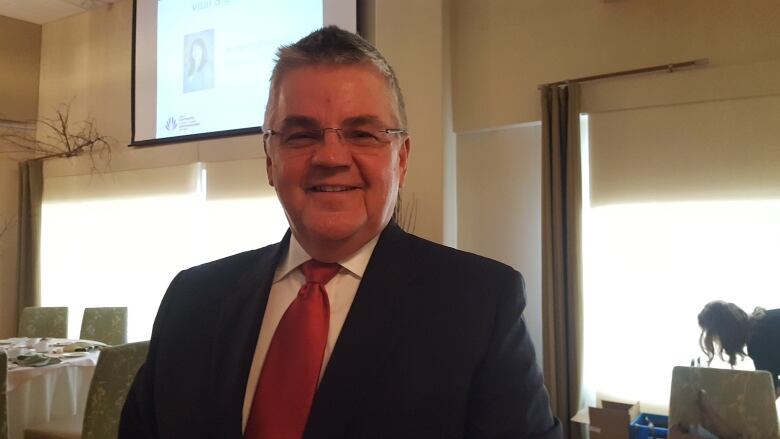Vital Signs reports focuses on well-being of Aboriginal people in Sudbury
Annual check-up of city shows higher rates of homelessness and use of foodbanks in Aboriginal population

The Sudbury Community Foundation has released the 2016 Vital Signs report looking at the quality of life in the community, and for the first time since 2008, the annual check-up is focusing on the well-being of Aboriginal people in the city.
It's an opportunity to compare what has changed, and what has stayed the same in the intervening eight years, says Brian Koivu, the executive director of the foundation which prepares the annual report.
It's also a recognition "that some of the issues that affect community, affect the Aboriginal community even more profoundly," he said.
Those issues include higher rates of homelessness and use of foodbanks among the Aboriginal population in Greater Sudbury, as well as lower enrolment in post secondary education and increased cases of certain diseases.
The report states that many Aboriginal people in the community are "critical of the many ways in which Canada has not lived up to its treaty obligations".
It further found that generalized ignorance and systemic racism are ongoing issues in Sudbury, which need to be addressed, while economically successful Aboriginal people in the city expressed a need for greater respect and social inclusion, heightened cultural visibility and programming, as well as a professional network to support economic development and entrepreneurship.

Now that the information has been released, the community can work together to come up with solutions, said Suzanne Shawbonquit lives in the Atikameksheng First Nation which is located within the city.
"It might be a combination of social services, economic development people, a scientist, it could be an engineer, it has to be a collective group to come up with these solutions."
The Sudbury Community Foundation said it now plans to focus on Aboriginal well-being in its annual report every three to four years.
Other highlights from the report include:
- Economic Success of Aboriginal People-Of the 13,405 Aboriginal people living in Sudbury, 3,565 had household incomes over $40,000 (2011 Census). The majority consider Sudbury to be home.
- Health & Wellness-According to Statistics Canada, reported rates of arthritis for the Sudbury & District Health Unit area (22.4%) were significantly higher than the rates for both Ontario (18.1%) and Canada (16.2%) for the 2013/2014 period. The SDHU area has had significantly higher rates of arthritis since 2007/2008. As well, access to regular medical doctor is lower than provincial rate In 2013/2014.81.2% of people living in the Sudbury & District Health Unit area reported having access to a regular medical doctor. According to Statistics Canada, this rate was significantly lower than the rate for Ontario (91.8%) but not significantly different than the rate for Canada (84.8%). This trend has remained consistent since 2007/2008.
- Homelessness -A 2015 study on homelessness in Greater Sudbury found there were 440 people who identified as "absolutely homeless", nearly 1,000 were at risk of becoming homeless, and 21 had spent the night prior outdoors. Approximately 45% of the individuals who were surveyed identified as having an Aboriginal background. It should be noted that there were many people who refused to complete the survey; the results are not conclusive.
- Unemployment increases in 2015 -According to recent Labour Force Survey estimates, the unemployment in Greater Sudbury in 2015 for people aged 15 and over was 7.3%, nearly equal to the Ontario (6.8%) and Canada (6.9%) rate. The unemployment rate in Greater Sudbury in 2015 was slightly higher for males (8.4%) than females (6.2%) According to the Statistics Canada Labour Force Survey, the unemployment rate in Greater Sudbury increased from 5.9% in January 2015 to 8.4% in December 2015. The unemployment rates in Canada and Ontario remained steady throughout 2015. The unemployment rate for Greater Sudbury has levelled out around 8% going into 2016.
files from Martha Dillman












_(720p).jpg)


 OFFICIAL HD MUSIC VIDEO.jpg)
.jpg)



























































































